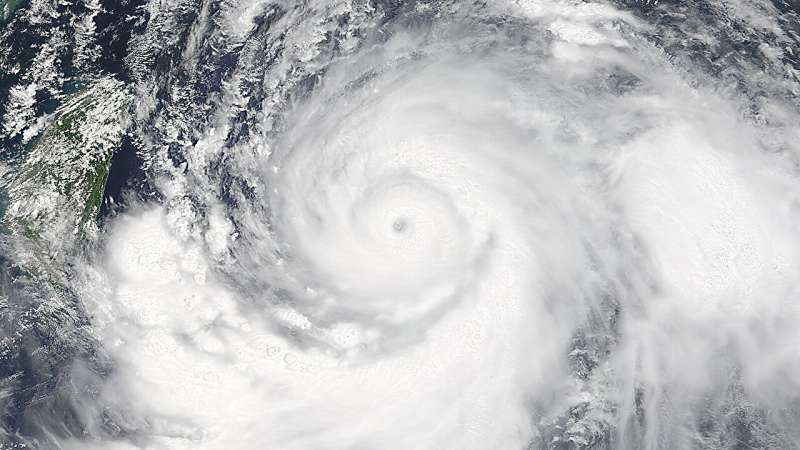 Super Typhoon Lekima was imaged by NASA’s Terra satellite on 8 August 2019 as it approached Taiwan. A new study shows birds and insects were likely trapped inside the eye. Credit: NASA, LANCE/EOSDIS Rapid Response, captured on Terra satellite
Super Typhoon Lekima was imaged by NASA’s Terra satellite on 8 August 2019 as it approached Taiwan. A new study shows birds and insects were likely trapped inside the eye. Credit: NASA, LANCE/EOSDIS Rapid Response, captured on Terra satellite
In the aftermath of Super Typhoon Lekima, which struck mainland China in early August 2019, a number of bird species were recorded in places they had never been seen before. A new study reveals the likely reason behind how they got there.
Flying creatures such as birds and insects—sometimes known as biological scatterers—can become trapped inside the eye of a tropical cyclone and carried along as it moves. Most studies have focused on active migration by these species, whereas only a few have used radar to track animals pinned inside a storm's eye.
In an article published in the Journal of Geophysical Research: Biogeosciences Kehui Huang and colleagues looked to polarimetric radar observations of Lekima as it approached land from a station located near Wenzhou, a city on China's central coast. The researchers identified biological scatterers trapped in the storm's eye by their radar characteristics: high differential reflectivity, low cross-correlation coefficient values, and highly variable differential phase values.
By focusing on signals that fit those characteristics, the researchers watched echoes from flying species grow more prominent as Lekima drew closer to the coast. Then, just as the storm made landfall, the creatures' distribution within the eye changed from circular to oblong, which the researchers interpreted as exhausted birds flocking to the ground to rest. Moreover, some birds can be carried by the cyclone to a distance of several hundred kilometers away from landfall.
Comparing their results to similar data gathered from Hurricane Irene in 2011, the authors note that Lekima entrapped a higher proportion of birds, whereas Irene's eye contained mostly insect swarms.
Future studies using radar to observe flying animals and insects inside tropical cyclone eyes could help reveal how some invasive species move into new territory, the authors say, as well as help weather trackers distinguish meteorological signals from biological ones.
More information: Kehui Huang et al, Polarimetric Radar Observations of Biological Scatterers in the Eye of Typhoon Lekima (2019), Journal of Geophysical Research: Biogeosciences (2023). DOI: 10.1029/2023JG007533
This story is republished courtesy of Eos, hosted by the American Geophysical Union. Read the original story here.
Citation: Radar tracks unfortunate creatures trapped in tropical cyclones (2023, September 27) retrieved 27 September 2023 from https://phys.org/news/2023-09-radar-tracks-unfortunate-creatures-tropical.html
This document is subject to copyright. Apart from any fair dealing for the purpose of private study or research, no part may be reproduced without the written permission. The content is provided for information purposes only.


















 English (United States) ·
English (United States) ·